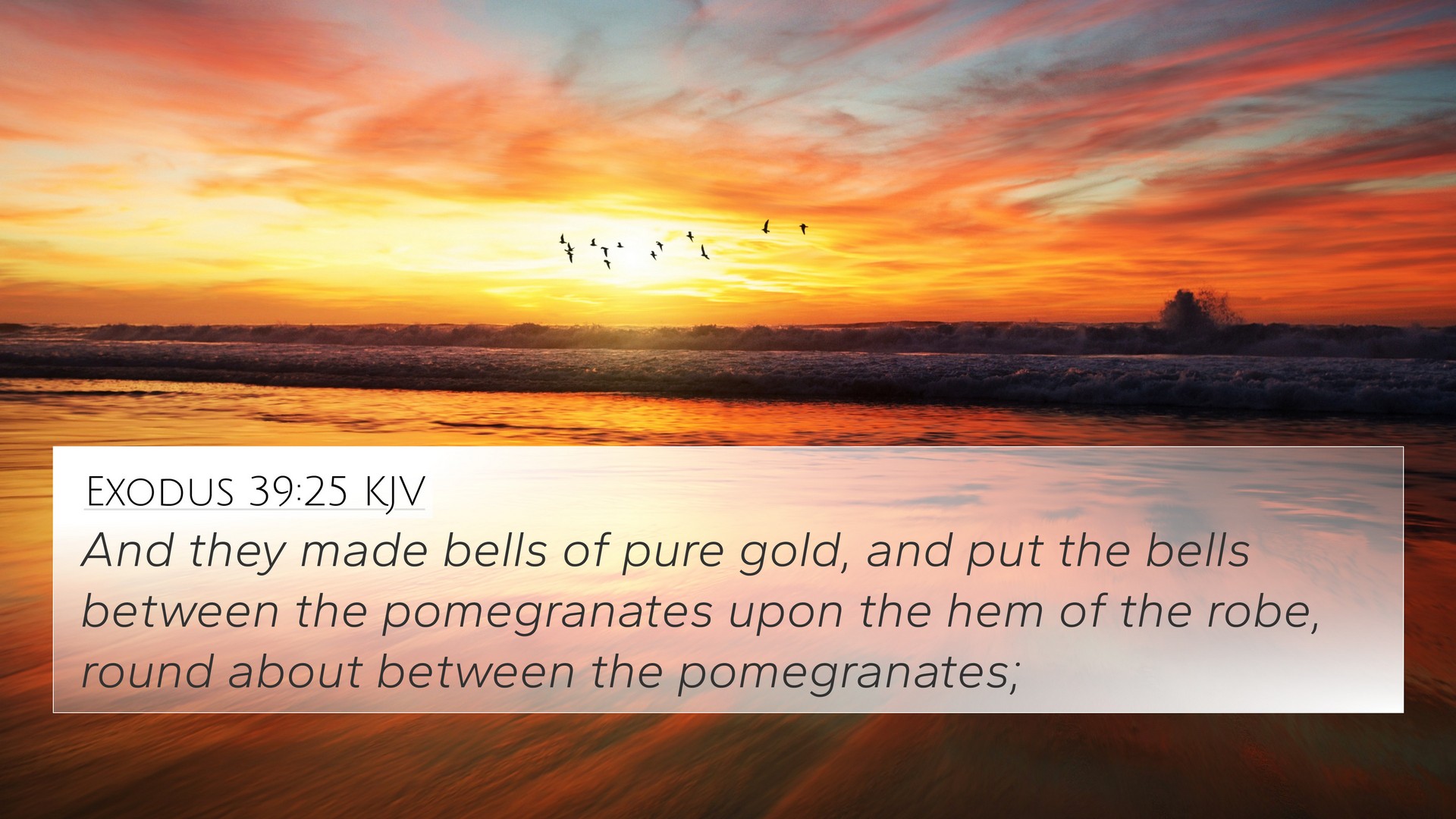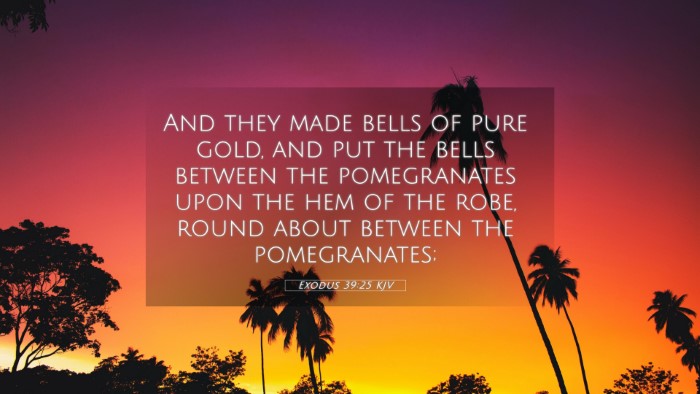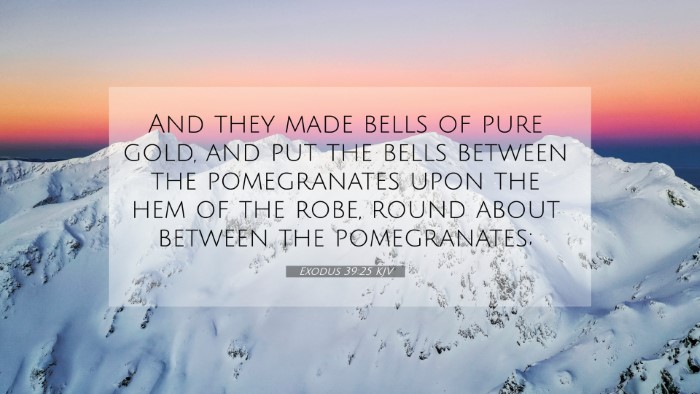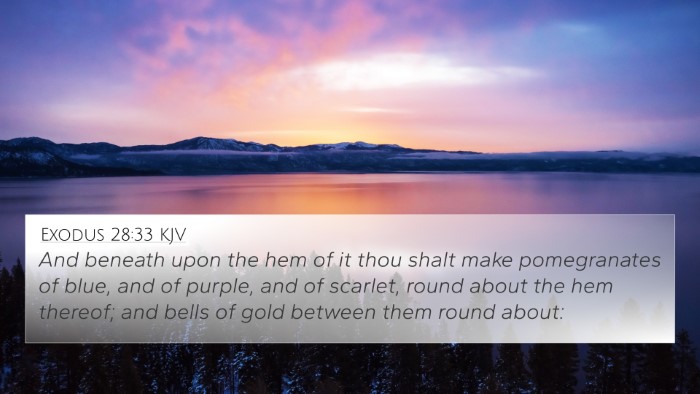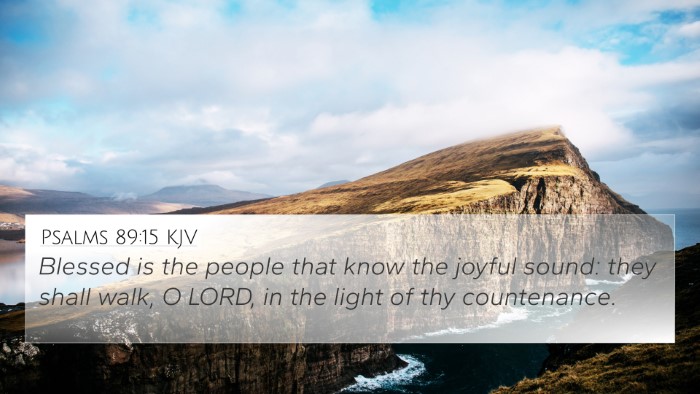Understanding Exodus 39:25
Exodus 39:25 speaks about the intricate and detailed design of the garments made for the priests, particularly focusing on the fine linen used in their construction. This verse highlights not only the physical details but also the spiritual significance behind each element of the holy attire.
Summary of Exodus 39:25
This verse describes the work of the skilled artisans who created the garments for the priests, emphasizing the quality and presentation of their craftsmanship. The finest materials, such as gold, blue, purple, and scarlet yarns, were utilized, indicating the importance of holiness and reverence in the service of God. The verse ultimately reflects the dignity and honor of the priestly role in the Israelite community.
Commentary Insights
Insights from public domain commentaries provide a deeper understanding of Exodus 39:25:
-
Matthew Henry:
Henry emphasizes the significance of the priest's garments as symbols of righteousness and holiness. He notes that the high standards of craftsmanship reflect God's desire for excellence in worship.
-
Albert Barnes:
Barnes discusses the use of fine linen and its representation of purity and righteousness, drawing parallels to how believers are to be clothed in Christ's righteousness.
-
Adam Clarke:
Clarke provides an analysis of the materials used, particularly the linen, which points to spiritual truths — the necessity of being set apart and holy before God. He ties this to the New Testament where believers are called to live in a manner worthy of their calling.
Bible Verse Cross-References
Exodus 39:25 can be connected to several other key Bible verses that deepen understanding through cross-references:
- Leviticus 16:4: Discusses the attire of the high priest and underscores the importance of purity in approach to God.
- Revelation 19:8: Speaks of the fine linen, bright and clean, representing the righteous acts of the saints.
- 1 Peter 2:9: Highlights the believer’s identity as a royal priesthood, pointing to the continuation of the priestly calling from Old Testament to New Testament.
- Hebrews 7:26: Refers to Jesus as the high priest who meets the standards of holiness, thus emphasizing the transformation from the old covenant to the new.
- Exodus 28:2: Explains the garments of Aaron and his sons, indicating the divine instructions for their priestly duties.
- Isaiah 61:10: Describes how God adorns His people with garments of salvation and robes of righteousness.
- Psalm 132:9: Mention of the priests being clothed with righteousness, linking back to the divine selection of their attire.
Importance of Cross-Referencing Biblical Texts
Cross-referencing the Bible enhances our understanding by:
- Providing context that deepens the meaning of specific verses.
- Revealing thematic connections across both the Old and New Testaments.
- Facilitating a comparative Bible verse analysis that enriches sermon preparation and personal study.
Tools for Bible Cross-Referencing
To engage deeply with interpersonal connections between Bible verses, consider using:
- Bible Concordance: A comprehensive tool that allows for easy lookup of Bible verses and their meanings.
- Bible Cross-Reference Guide: This guides embrace the practice of cross-referencing themes across different scriptures.
- Cross-Reference Bible Study: This method promotes an interactive exploration of related verses.
Conclusion
In summary, Exodus 39:25 serves not only as an account of the priestly garments but also as a rich source for studying the connections between biblical texts. By examining this verse alongside its cross-references, we gain insights into the call to holiness, the spiritual significance of priesthood, and the overarching narrative that culminates in Christ. The practice of linking Bible verses enriches our understanding and broadens our perspective on Scripture.
